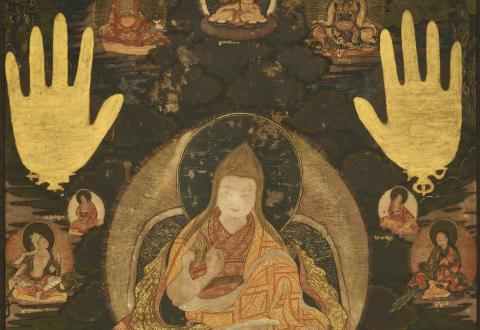
Tibet & Nepal
Gilt bronze sculptures, ritual objects, and wooden figurines adorn the gallery dedicated to Himalayan art. But it is above all the thang-ka—these exquisite scroll paintings - that capture your attention. The Museum holds 200 of them, displaying about ten, while the remainder can be explored in detail via an interactive kiosk.
Creation of the collection
The art of the Himalayas is represented by two exceptional collections, notable for having been assembled locally. The first belonged to the Belgian Léon Verbert, who worked in China and undertook numerous journeys. He amassed around 600 Tibetan, Mongolian, and Chinese objects, 385 of which were acquired by the Belgian State in 1956. These include gilded bronze and wooden figures, Buddhist ritual objects, and especially scroll paintings known as thang-ka, dating from the seventeenth to the nineteenth century. Most originate from the provinces of Amdo and Kham in Eastern Tibet.
The second...
The art of the Himalayas is represented by two exceptional collections, notable for having been assembled locally. The first belonged to the Belgian Léon Verbert, who worked in China and undertook numerous journeys. He amassed around 600 Tibetan, Mongolian, and Chinese objects, 385 of which were acquired by the Belgian State in 1956. These include gilded bronze and wooden figures, Buddhist ritual objects, and especially scroll paintings known as thang-ka, dating from the seventeenth to the nineteenth century. Most originate from the provinces of Amdo and Kham in Eastern Tibet.
The second collection was assembled by Colonel McDonald, who worked in India and donated his collection of Nepalese bronze sculptures and ritual objects to the Museum in the 1930s.

Tibetan roll paintings
Among the rare items are thang-ka adorned with gold hand- and footprints, depicting the first Dalai Lama, the first king of Tibet, and representations of the Potala and other key monasteries of the Gelugpa Order. The collection also includes a complete series of twelve eighteenth-century thang-ka illustrating the most important deeds and events from the life of Buddha.

Contact
- Bowi Quibus: b.quibus@kmkg-mrah.be